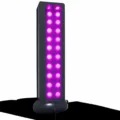Introduction to Endometriosis in Adolescents
Endometriosis is a chronic condition affecting millions of women worldwide, including adolescents. It occurs when tissue similar to the lining inside the uterus, known as endometrium, starts to grow outside the uterus. Recognising and addressing early signs of endometriosis in adolescents is crucial for managing symptoms and improving quality of life.
Understanding the Symptoms of Endometriosis in Adolescents
Adolescents with endometriosis often experience symptoms that can be mistaken for common menstrual discomfort. Key symptoms to watch for include:
- Severe menstrual cramps
- Chronic pelvic pain
- Pain during bowel movements or urination
- Heavy menstrual bleeding
- Nausea and fatigue
Identifying these symptoms early can lead to timely diagnosis and treatment.
Diagnosing Endometriosis in Adolescents
Diagnosing endometriosis in adolescents can be challenging due to the overlap of symptoms with other conditions. A thorough medical history, physical examination, and imaging tests like ultrasound or MRI may be required. In some cases, a laparoscopy, a surgical procedure, is needed to confirm the diagnosis.
Effective Treatments for Endometriosis in Adolescents
Treatment for endometriosis in adolescents aims to manage pain and reduce the progression of the disease. Common treatments include:
- Pain relief medications such as NSAIDs
- Hormonal therapy to reduce or eliminate menstruation
- Physical therapy to alleviate pelvic pain
- Surgical interventions to remove endometrial tissue
Early intervention can significantly improve outcomes for adolescents with endometriosis.
Living with Endometriosis: Tips for Adolescents
Living with endometriosis can be challenging, but there are strategies to help manage the condition:
- Maintaining a healthy diet rich in anti-inflammatory foods
- Engaging in regular physical activity
- Practicing stress management techniques like yoga and meditation
- Joining support groups for emotional and social support
- Keeping a symptom diary to track pain and other symptoms
These tips can help adolescents lead a fulfilling life despite the challenges of endometriosis.
FAQ
What are the early signs of endometriosis in adolescents?
The early signs include severe menstrual cramps, chronic pelvic pain, pain during bowel movements or urination, heavy menstrual bleeding, and fatigue.
How is endometriosis diagnosed in adolescents?
Diagnosis involves a medical history review, physical examination, imaging tests like ultrasound or MRI, and sometimes laparoscopic surgery.
What treatments are available for adolescents with endometriosis?
Treatments include pain relief medications, hormonal therapy, physical therapy, and surgical interventions to remove endometrial tissue.
Can lifestyle changes help manage endometriosis symptoms?
Yes, maintaining a healthy diet, regular physical activity, stress management, and support groups can help manage symptoms.
Is endometriosis curable?
Currently, there is no cure for endometriosis, but treatments and lifestyle changes can effectively manage the symptoms.
Conclusion
Recognising and addressing early signs of endometriosis in adolescents is essential for effective management of the condition. With the right diagnosis, treatment, and lifestyle adjustments, adolescents can lead a healthy and fulfilling life.









